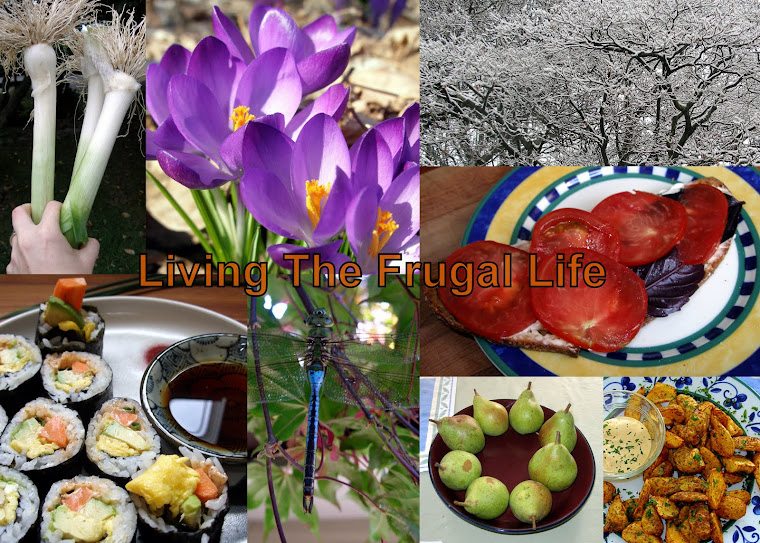I like picking apples. There's something a little meditative and satisfying about it. It's not like any other harvesting I do. Instead of squatting down to tug something out of the earth, or bending low to cut, I'm reaching up, high above my head, trying to avoid being poked in the face by branches. Ladders, and precarious balancing are involved. The sheer quantity of apples is always a little astonishing too.

The picture below shows two picked apples. You can see a cleanly broken off stem on the smaller apple. It was picked correctly when it was ripe. The larger apple is also ripe, but when I picked it, I snapped off a part of the woody branch too. This is very easy to do if you yank the apple, or try to pick too early. And sometimes it happens even when you do everything right. Breaking off part of a branch near where a stem attaches is not good for next year's harvest, because the blossoms will reform in pretty much the same place year after year. So that little piece of wood attached to the larger apple's stem means no more blossoms from that part of the branch where this apple grew. Even if you only glean apples from a tree belonging to someone else, it's a good idea to take care when picking apples, so as not to significantly reduce next year's crop.

You can also see some dark spots on the apples in this picture. That's sooty mold. It's harmless, and it washes off with a good scrub, but it is rather unpleasant looking. Many of our apples have a lot more sooty mold than these two. I've been told that baking soda sprays during the summer can help prevent or limit the sooty mold. Proper pruning also reduces the severity of sooty mold by increasing the air circulation and the amount of light the apples get. Tidiness around the tree and the removal of all leaves over the winter is supposed to help too. Apparently the fungus overwinters on the fallen leaves. So if they're all removed to a good distance - or better still, burned - it's supposed to help next year. After a good pruning of our tree early this spring, we're definitely seeing less sooty mold than last year, even though we never got around to the baking soda spray.
We're letting the apples "sweat" a little bit in the garage, and we plan to press them into cider this coming weekend. The aroma of apples almost knocks me over whenever I go out there. The sweating process lets the apples lose some moisture so that their sugars concentrate, producing a sweeter cider. Ideally, they'd sweat for two weeks or more. But our schedule won't allow that for the bulk of the apples. We use a massive old apple press that belongs to a relative. I'll post some pictures when we do the pressing.
I'm far from an expert on growing apples, or making cider, but I do have reading recommendations if you want to learn more.
The Apple Grower, by Michael Phillips
Cider: Making, Using & Enjoying Sweet & Hard Cider, by Annie Proulx (yes, the novelist) and Lew Nichols
Cider, Hard and Sweet, by Ben Watson







2 comments:
We have the Annie Proulx book, and my husband made some fantastic cider last year using their recommendations. I second it as a good resource :).
Thanks for the second opinion, Wendy. We're looking forward to making cider pretty soon. Did you make sweet or hard cider? We made some of each.
Post a Comment